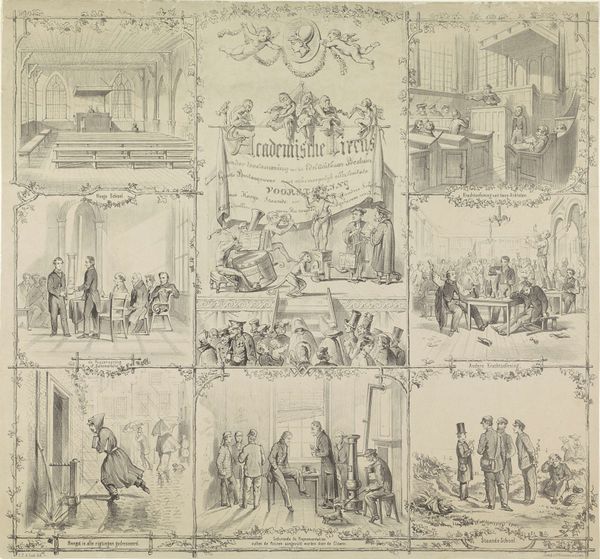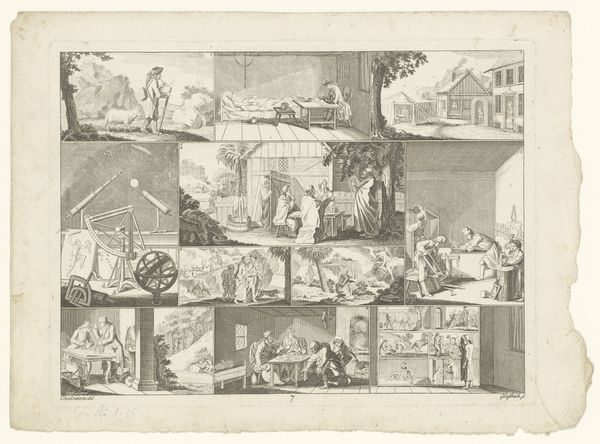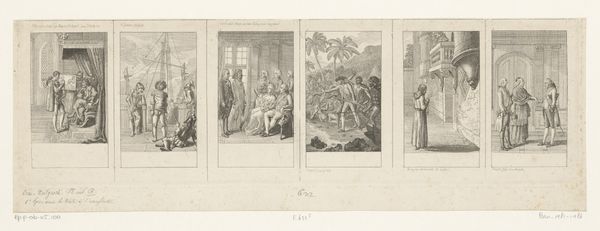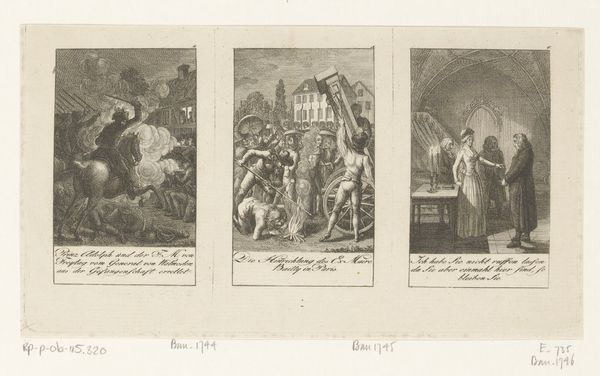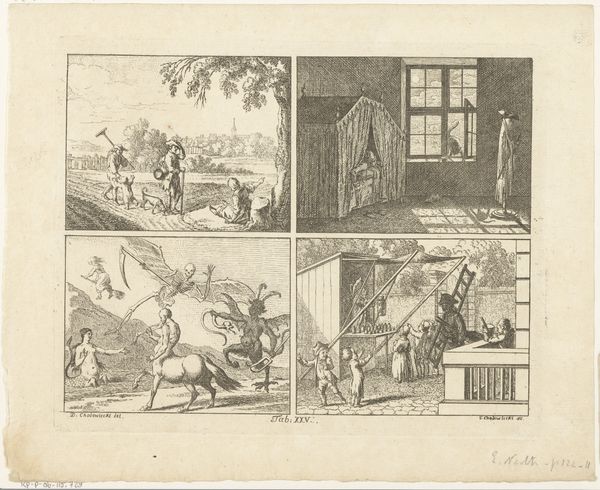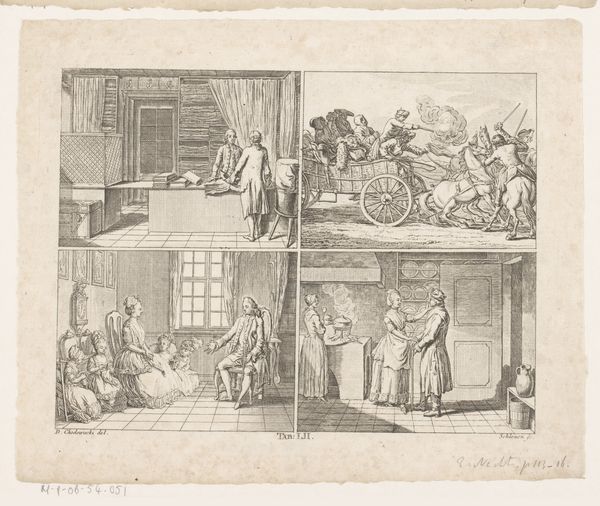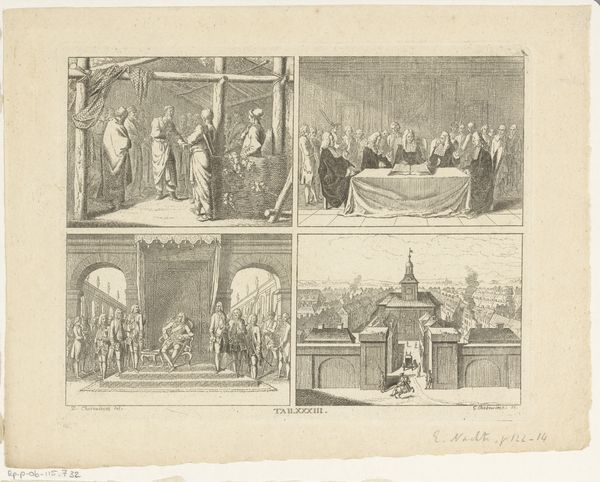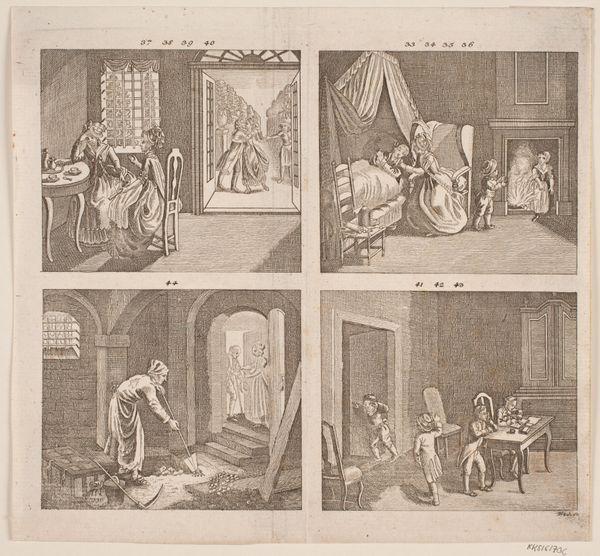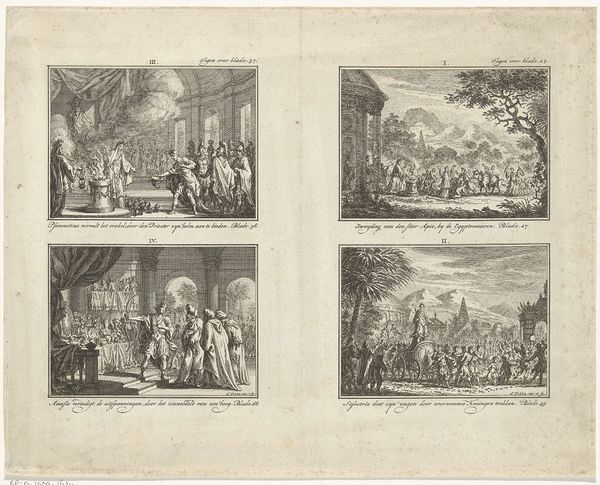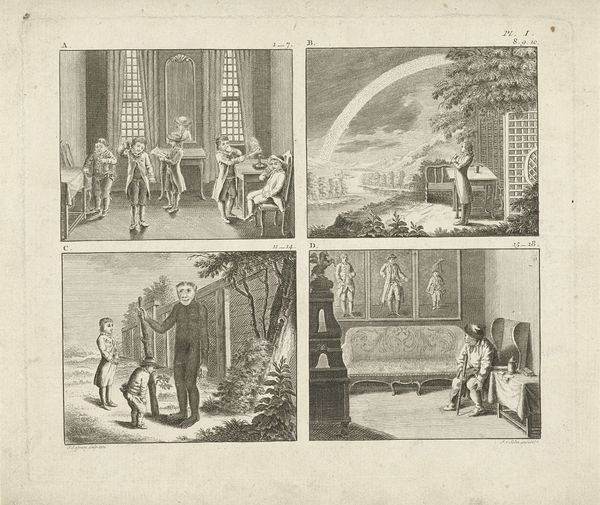
print, etching, engraving
#
narrative-art
# print
#
etching
#
etching
#
history-painting
#
engraving
Dimensions: 173 mm (height) x 188 mm (width) (bladmaal)
Curator: Johann Gottlieb Friedrich created this etching and engraving, titled "Fremstillinger for børn," around 1790. Immediately striking, don't you think? Editor: Indeed. There's a quaint yet melancholic air about the overall composition; the stark linework and compartmentalized scenes lend it a somewhat didactic feeling. Almost like frames from an early children’s primer. Curator: Quite insightful. It does present as a series of instructive narratives. Note how Friedrich compartmentalizes eighteen numbered scenes onto one sheet. We see indoor settings featuring music lessons and more fanciful outdoor settings that include children encountering supernatural figures, along with aging figures. The etching uses simple hatching to define space and volume, and I'm intrigued by the bare narrative details rendered throughout. Editor: Absolutely. Considering this was made at a time of immense cultural change throughout Europe, one could argue this reflects shifts in pedagogical approaches, moving perhaps from stern instruction to something more enlightened that allowed space for imaginative, or even transgressive ideas. I am particularly fascinated by the framing device that seems to divide life’s progress from the beginning to its twilight. I'd like to suggest that these individual frames represent moral lessons rendered for a child. What do you suppose this object’s life cycle would have looked like? Curator: Given the date and thematic considerations of education and youthful instruction, I might be tempted to analyze the figures through a social history of youth, schooling, or a material history of children's literature. Still, there is an emphasis here on the individual frames themselves, separate moments as points of both experience and potential narrative. It presents an early iteration of visual storytelling and, dare I say, the storyboard. The rainbow and monstrous form, both central icons in visual language. Editor: Agreed. These scenes, despite the simplicity of the etching, possess a surprising level of thematic and visual density. What appears initially as child’s play evokes something deeper, perhaps reflecting upon the evolving relationship between art and education as they came to life. Curator: A most enlightening reflection on our own roles as interlocutors. Perhaps, one might feel empowered, viewing these as an encouragement to revisit our own ideas of how learning progresses into our future artistic, historical engagements.
Comments
No comments
Be the first to comment and join the conversation on the ultimate creative platform.


